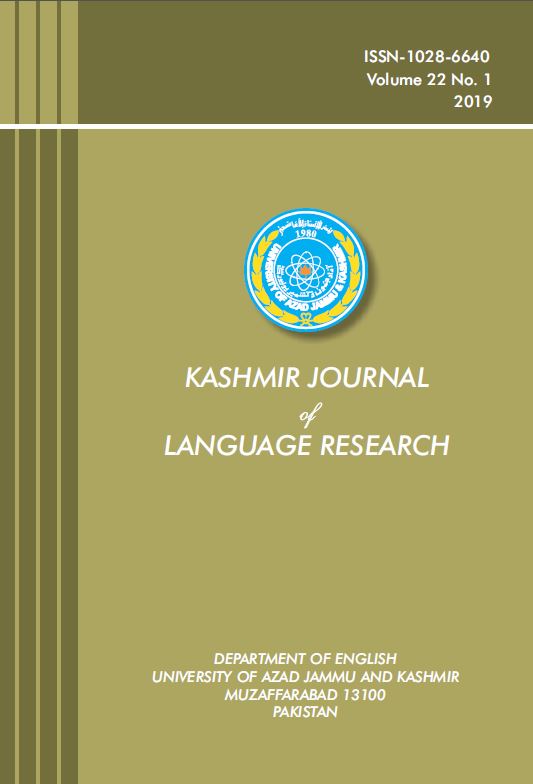Role of Acoustic phonetic cues in adult L2 acquisition: A study of learners of English in Balochistan
Abstract
This study aims to test the prediction of Feature Model that a new L2 sound contrast can be acquired if the phonological feature required to differentiate between the new L2 phonemes is already active in feature geometry of adult L2 learners. Pashto and Balochi lack [p-f] contrast but Brahvi does have this pair in its phonemic inventory. However, Eastern Balochi has only [f] and Western Balochi has [p], thus lacking both consonants as a minimal pair. Four groups of participants from Eastern Balochi, Western Balochi, Brahvi and Pashto speakers in Balochistan were selected for a series of experiments which tested the participants’ perception of [p-f] consonant pair. The results show that the participants are overall better in perception of [f] than [p], and their perception of [f] is better on coda and that of [p] on onset position. This is because of stronger acoustic signals of the target consonants. This indicates that phonetic acoustic cues are sometimes more effective factor in L2 perception than L1 phonological features. The findings seem to contradict the predictions of the Feature Model. Therefore, this paper forwards a suggestion that a phonetic-perception based model of L2 acquisition may better account for difficulties of adult learners of English in Balochistan.

Downloads
Published
Issue
Section
License
Copyright (c) 2021 Kashmir Journal of Language Research

This work is licensed under a Creative Commons Attribution 4.0 International License.




